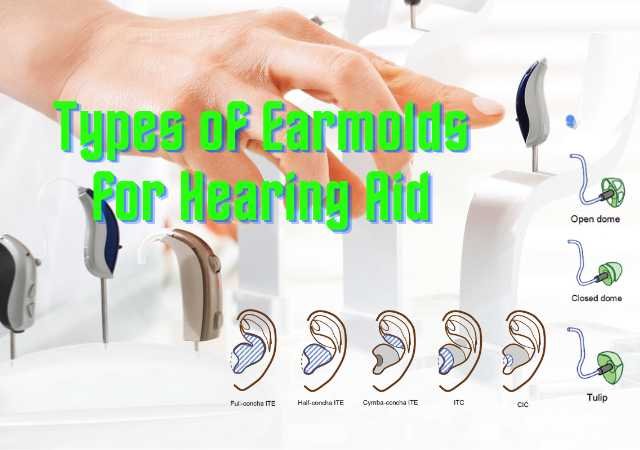 Modified Checklist for Autism in Toddlers-Revised (MCHAT-R): This updated version of the original MCHAT has been created to detect early signs of Autism Spectrum Disorder (ASD) in toddlers aged 16 to 30 months. Autism, a multifaceted neurodevelopmental disorder, presents a range of behavioral and developmental challenges, underscoring the importance of early detection and intervention for the best possible outcome.
Modified Checklist for Autism in Toddlers-Revised (MCHAT-R): This updated version of the original MCHAT has been created to detect early signs of Autism Spectrum Disorder (ASD) in toddlers aged 16 to 30 months. Autism, a multifaceted neurodevelopmental disorder, presents a range of behavioral and developmental challenges, underscoring the importance of early detection and intervention for the best possible outcome.
The MCHAT-R is a useful tool for clinicians, educators, and families to screen, observe, and evaluate a child’s social forms of communication and behaviors in a structured manner. It serves as a screening tool that also helps identify red flags related to ASD, making it a great tool for early intervention. The following introduction serves to underscore the importance of the MCHAT-R, its function, and its contribution to helping us develop early intervention approaches that can directly affect a child’s growth trajectory.
Instruction for Use of MCHAT Questionnaire
The M-CHAT-R/F is intended to complement the M-CHAT-R, a screener validated for identifying risk of autism spectrum disorder (ASD) in young children, ages 16 through 30 months. Keep in mind that, even with the Follow-Up, many of the children who fail the M-CHAT-R will not qualify for an ASD diagnosis. However, these children can also be at risk for other developmental disorders or delays, and any child who screens positive should be followed up.
Scoring: Once the parent has completed the M-CHAT-R, the following scoring instructions provided by the instrument should be followed. If the child screens positive, the Follow-Up items may be chosen according to the items failed in the M-CHAT-R. For the complete interview, only items that failed originally need to be administered, with each page corresponding to an item on the M-CHAT-R. The format of the interview is like a flowchart, where questions are asked until a PASS or FAIL is determined.
Keep in mind that in the interview process, parents may say “maybe.” In that case, you can ask if it is a yes or no answer and go in that direction. By cases where there are potentials for an “other” answer to be given, it becomes incumbent on the interviewer to use their judgment on whether or not this is a “pass” answer.
Note the answers on the M-CHAT-R/F Scoring Sheet which replicates the items on the M-CHAT-R but uses Pass/Fail instead of Yes/No. For Follow-Up, a screen is positive if the child fails any 2 items. In case of a positive screening result on M-CHAT-R/F, immediate referral for early intervention services and diagnostic evaluation is highly recommended. It is important to note that if a healthcare provider or parent has a concern about ASD, children should always be referred for evaluation regardless of an M-CHAT-R or M-CHAT-R/F score.
Modified Checklist for Autism in Toddlers-Revised (MCHAT-R) Questionnaire
The M-CHAT-R (Modified Checklist for Autism in Toddlers-Revised) is a simple screening tool used to detect early signs of Autism Spectrum Disorder (ASD) in toddlers. Designed for easy administration, the M-CHAT-R is appropriate for use in routine well-child care visits and can also be used by qualified professionals in the context of a comprehensive evaluation of ASD risk. The M-CHAT-R has strong sensitivity because its main purpose is to have as many true positive as possible.
It is important to note that this emphasis on sensitivity results in a higher false positive rate, meaning that not all children identified as being at risk will eventually receive a diagnosis of ASD. To mitigate this inherent shortcoming, the Follow-Up questions (M-CHAT-R/F) have been added to the assessment process. Although these follow-up questions will allow for a better screening result, users must also be aware that a large proportion of children who screen positive do not actually receive a diagnosis of ASD. However, these children are at increased risk for other developmental disorders or delays, and any child who screens positive should be evaluated further.
A major advantage of the M-CHAT-R is its efficiency, making scoring fast and easy in under two minutes. Users may refer to scoring instructions on the official website https://www.mchatscreen.com for scoring details. Also download related code and documents making a one-stop resource for professionals and caregivers. M-CHAT-R: The M-CHAT-R is a simple yet powerful tool that allows for early detection of children at risk for developmental disorders.
Modified Checklist for Autism in Toddlers (MCHAT) Scoring
Scoring Algorithm for Modified Checklist for Autism in Toddlers-Revised (MCHAT-R)
- Item Responses (except 2, 5, and 12):
- “NO” indicates Autism Spectrum Disorder (ASD) risk.
- Specific Items (2, 5, and 12):
- “YES” indicates ASD risk.
- Low-Risk: Total Score 0-2:
- If the child is younger than 24 months, screen again after the second birthday.
- No further action required unless surveillance suggests ASD risk.
- Medium-Risk: Total Score 3-7:
- Administer the Follow-Up (second stage of M-CHAT-R/F) to gather additional information.
- If M-CHAT-R/F score remains at 2 or higher, the child has screened positive.
- Action required: Refer the child for diagnostic evaluation and eligibility evaluation for early intervention.
- If the score on Follow-Up is 0-1, the child has screened negative.
- No further action required unless surveillance indicates risk for ASD. Rescreen at future well-child visits.
- High-Risk: Total Score 8-20:
- It is acceptable to bypass the Follow-Up and refer immediately for diagnostic evaluation and eligibility evaluation for early intervention.
Modified Checklist for Autism in Toddlers-Revised (MCHAT-R) Questions
Please be aware that Yes/No options have been replaced with Pass/Fail.
When you point at something across the room, does your child look at it?
(For instance, when you point at a toy or an animal, does your child look at the toy or animal?)- Pass: The child looks at the pointed object.
- Fail: The child does not look at the pointed object.
Have you ever wondered if your child might be deaf?
- Pass: No concerns about deafness.
- Fail: There are concerns about potential deafness.
Does your child engage in pretend or make-believe play?
(For example, pretending to drink from an empty cup, talking on a phone, or feeding a doll or stuffed animal.)- Pass: The child engages in pretend play.
- Fail: The child does not engage in pretend play.
Does your child enjoy climbing on things?
(For example, furniture, playground equipment, or stairs.)- Pass: The child enjoys climbing.
- Fail: The child does not enjoy climbing.
Does your child exhibit unusual finger movements near their eyes?
(For example, wiggling fingers close to the eyes.)- Pass: No unusual finger movements.
- Fail: The child exhibits unusual finger movements.
Does your child point with one finger to ask for something or seek help?
(For example, pointing to a snack or toy that is out of reach.)- Pass: The child points to communicate needs.
- Fail: The child does not point to communicate needs.
Does your child point with one finger to show you something interesting?
(For example, pointing to an airplane in the sky or a big truck on the road.)- Pass: The child points to share interesting things.
- Fail: The child does not point to share interesting things.
Is your child interested in other children?
(For example, watching, smiling, or approaching other children.)- Pass: The child shows interest in other children.
- Fail: The child does not show interest in other children.
Does your child share things by bringing them to you or holding them up for you to see?
(For example, showing you a flower, a stuffed animal, or a toy truck.)- Pass: The child shares items for enjoyment, not just seeking help.
- Fail: The child does not share things.
Does your child respond when you call their name?
(For example, looking up, talking, or babbling.)- Pass: The child responds when their name is called.
- Fail: The child does not respond when their name is called.
When you smile at your child, do they smile back at you?
- Pass: The child reciprocates with a smile.
- Fail: The child does not reciprocate with a smile.
Does your child get upset by everyday noises?
(For example, a vacuum cleaner or loud music.)- Pass: The child does not get upset by common noises.
- Fail: The child gets upset by everyday noises.
Can your child walk?
- Pass: The child can walk.
- Fail: The child cannot walk.
Does your child make eye contact when you are talking, playing, or dressing them?
- Pass: The child makes eye contact during interactions.
- Fail: The child does not make eye contact during interactions.
Does your child attempt to imitate your actions?
(For example, waving bye-bye, clapping, or making a funny noise.)- Pass: The child tries to copy your actions.
- Fail: The child does not attempt to imitate your actions.
If you turn your head to look at something, does your child also look in that direction?
- Pass: The child follows your gaze.
- Fail: The child does not follow your gaze.
Does your child seek your attention by trying to get you to watch them?
(For example, saying “look” or “watch me.”)- Pass: The child seeks your attention for praise.
- Fail: The child does not seek your attention.
Does your child understand and comply when you instruct them to do something without pointing?
(For example, “put the book on the chair” or “bring me the blanket.”)- Pass: The child understands and complies with instructions.
- Fail: The child does not understand or comply with instructions without pointing.
When something new happens, does your child look at your face to gauge your reaction?
(For example, a strange or funny noise, or seeing a new toy.)- Pass: The child looks at your face to understand your reaction.
- Fail: The child does not look at your face in response to new stimuli.
Does your child enjoy movement activities, such as being swung or bounced on your knee?
(For example, being swung or bounced on your knee)- Pass: The child enjoys movement activities.
- Fail: The child does not enjoy movement activities.
FAQ about Modified Checklist for Autism in Toddlers-Revised (MCHAT-R)
1. What is the purpose of the MCHAT-R?
The MCHAT-R is a screening tool, designed to assess the potential presence of Autism Spectrum Disorder (ASD) through the qualitative analysis of a child’s behavior during a specific sampling of their developmental stage (16-30 months). This helps detect early warning signs of red flags associated with ASD, allowing intervention and support.
2. Who can use the M-CHAT-R and in what context?
The M-CHAT-R is designed for use by healthcare professionals/educators and parents. It can be performed within routine well-child care visits, helping to identify developmental challenges in toddlers at an early age.
3. What happens after a positive M-CHAT-R result?
Follow-Up items are administered when a child screens positive and are based on the items that were failed in the M-CHAT-R. If the Follow-Up has a positive screen, early intervention and diagnostic testing referral should occur as quickly as possible, regardless of the M-CHAT-R or M-CHAT-R/F score.
4. How is the MCHAT-R scored, and what do the scores indicate?
Points are awarded based on responses. From there, you can leverage low, medium and high-risk categorizations that direct which next steps to take. A high-risk score (8-20), for example, may lead to immediate referral for diagnostic evaluation and early intervention.
5. Can a child be at risk for ASD even if they do not pass the M-CHAT-R?
Yes, it is worth noting that not all children who are identified as at risk will be diagnosed with ASD. A child not passing the M-CHAT-R may also be at risk of a developmental disorder, or they may simply not pass the M-CHAT-R but not have ASD; either way, others are at risk for other developmental disorders or delays, necessitating further evaluation and surveillance.
References:
- Assessment in Speech Language Pathology A Resource Manual 5. Auflage, Kenneth G. Shipley, Julie G. McAfee [Buch]
- The American Academy of Pediatrics (AAP) in their guidelines on developmental surveillance and screening







0 Comments